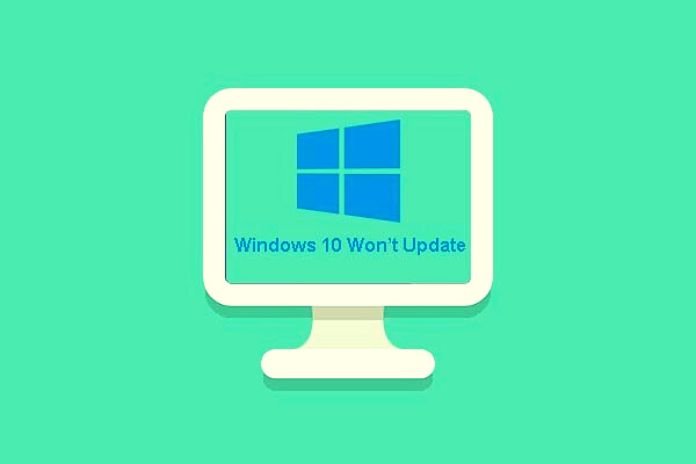Does Something Need To Be Fixed After Windows 10 Update?
Most successive issues in the wake of introducing a semi-yearly update ( highlight update ) of Windows 10. Viable mediations to address. Roughly at regular intervals, Microsoft discharges a component update or an update that adds new elements to Windows 10 or acts like a Help Pack by upgrading and solidifying the highlights recently presented at the working framework level.
By changing past practices, from 2021, the spring Windows 10 component updates will be lighter, while essential new elements regarding usefulness will show up with the harvest time refresh. The lighter component refreshes are likewise called enablement bundles (“pacchetto diglitazone, in India”): they are those updates that, because of their design like that of a Help Pack, can be applied with a solitary restart of the framework.
Not inconsistently, in the wake of introducing an element update, particularly of bundles that present new highlights, clients have whined about the strange way of behaving of Windows 10. Beneath, we perceive how to oversee and care for the most widely recognized issues.
The Network No Longer Works After The Update
Another common situation is needing help accessing the Internet after upgrading to Windows 10. Apart from the apparent attempt to restart the Windows 10 device, you can press Windows+R and type ncpa.CPL, right-click on the network interface you are using, choose to Disable, and then double-click on the same icon.
If the network connection still doesn’t work, we suggest typing cmd in the Windows 10 search box, pressing the CTRL+SHIFT+ENTER key combination, and then writing the following: ping 127.0.0.1 This way, you can check if the network stack is working correctly: if you receive a response from the local system, there are no problems.
Otherwise, you can apply the procedures illustrated in the article Internet connection does not work after updating Windows 10: how to solve it by re-initializing the network stack and possibly trying to restore the network card drivers. You can also update the network card driver or, vice versa, bring it back to the previous version: press Windows+R and type devmgmt.
MSC, look for the Network adapters section, double click on the device name on the Driver tab, and finally refer to the Update driver and Roll back driver buttons. In the first case, you can search the PC manufacturer’s website’s support area for an updated driver version (then click on Search my computer for drivers and specify the folder where the drivers have been saved in uncompressed format).
Suppose the ping 127.0.0.1 command returns a positive outcome. In that case, it will be necessary to check the correct configuration of the network interface by right-clicking it from the tab opened with the ncpa—CPL command and choosing Properties. In the Internet Protocol Version 4 and Internet Protocol Version 6 (if enabled) sections, you can select Obtain an IP address automatically and Obtain DNS server address automatically.
At the Windows 10 command prompt, you can then type:
- ipconfig /release
- ipconfig /renew
Using A Temporary Profile: Your Files Have Disappeared
In some cases, the Windows 10 update installation procedure may fail, indicating that you are logged in with a temporary profile. In these situations, uninstalling the feature update usually allows you to overcome the problem while waiting for Microsoft, based on the reports received, to take charge and resolve the strange behavior.
To uninstall the latest feature update, type Recovery options in the Windows 10 search box and click on Start next to Go back to the previous version of Windows 10. However, we suggest reading the in-depth study Files on the desktop and in other folders (Documents, Downloads) are gone: how to recover them, which offers the tools to recover your files and resolve the situation by restoring the correct user account without canceling the application of the feature update.
The Windows 10 Update Changed All The Default Apps
Another “classic” after installing a Windows 10 update is to change the default programs. The applications configured as default for specific operations or for opening specific files are no longer indicated as such: to solve this, write Default apps in the search box and then refer to the window of the same name.
Choose default apps by file type and Choose default apps by protocol links allow you to associate the programs installed in Windows 10 with specific file extensions or use various protocols.
Privacy Settings And Other Preferences Changed
If you had used third-party tools to customize the behavior of Windows 10 by disabling telemetry and other data transfers that are not strictly necessary for the correct functioning of the operating system (for example, by using the script in the article Optimize and speed up Windows 10: how to do it automatically ).
Running the free WSD utility helps you understand which features, if any, were re-enabled with the installation of the update. Clicking on Privacy in the application’s main window allows deactivating them again. In the article Common Windows 10 problems and how to solve them, some indications of other issues that can affect Microsoft operating system installations quite frequently.
Read Also: Associate Your Android Smartphone With A Windows 11 PC
Share this content:











Post Comment